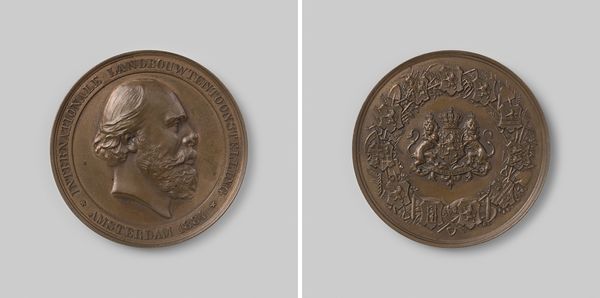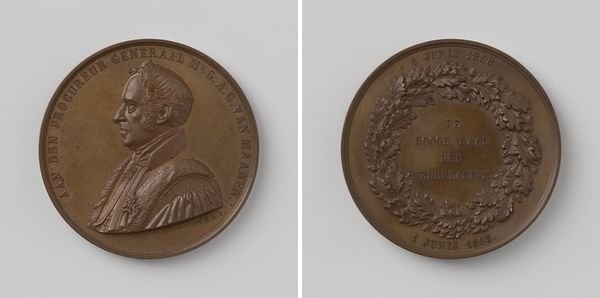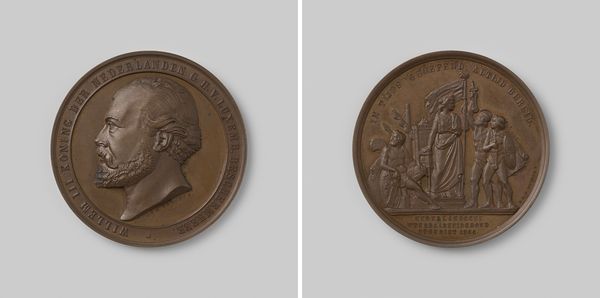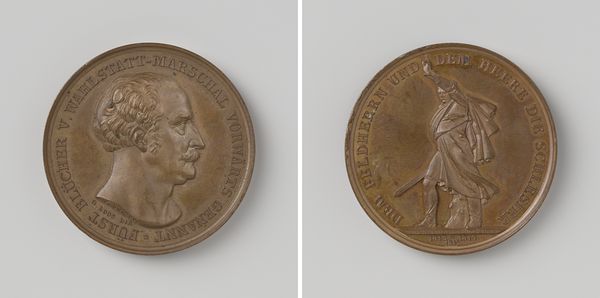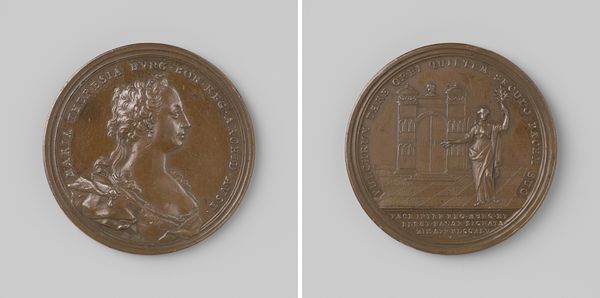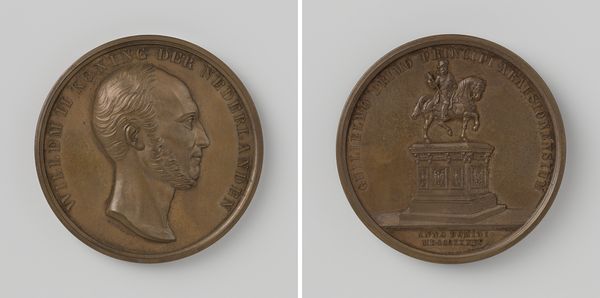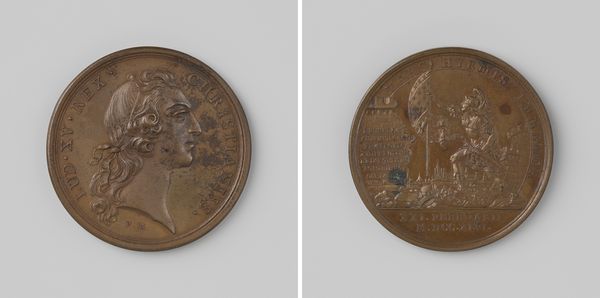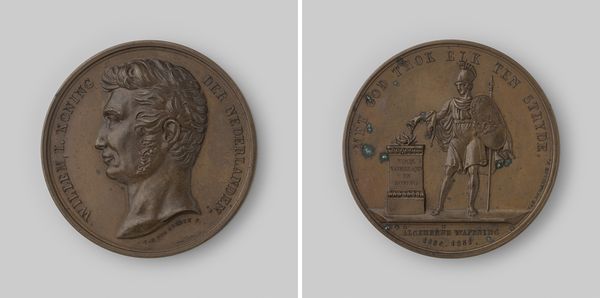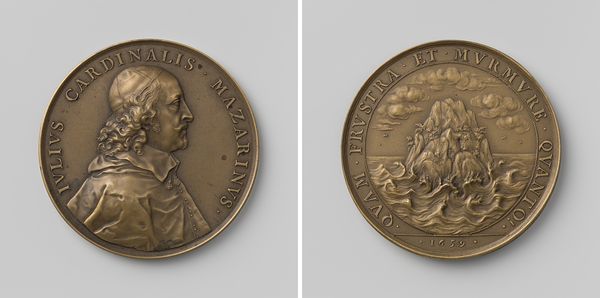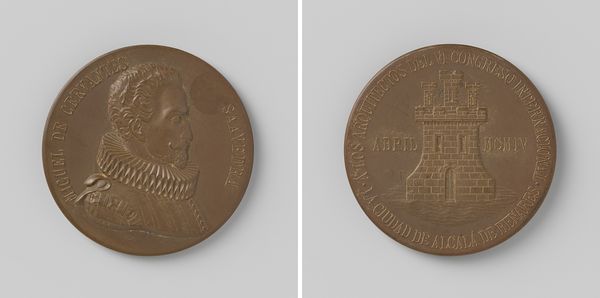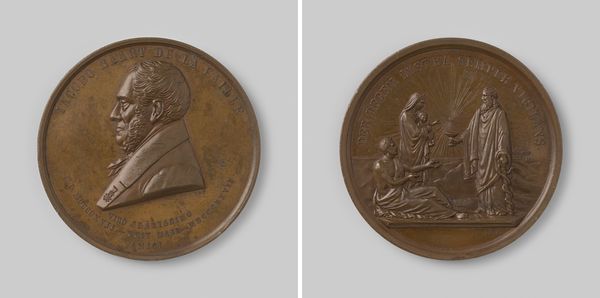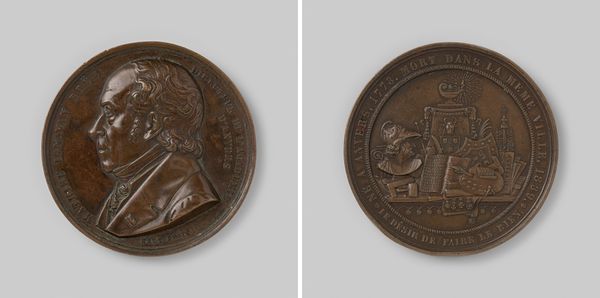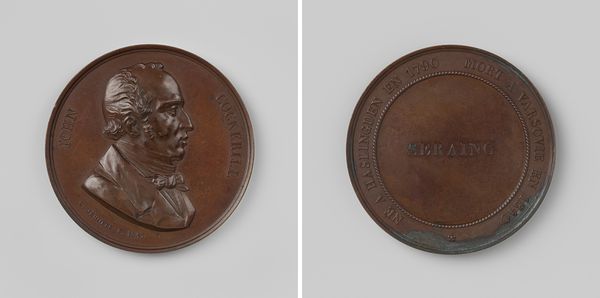
Dimensions: diameter 5.1 cm, weight 58.43 gr
Copyright: Rijks Museum: Open Domain
Editor: This bronze sculpture from 1879 by Johan Philip Menger, titled "Overlijden van Hendrik, prins der Nederlanden," appears to be a commemorative medal, residing at the Rijksmuseum. The contrast between the smooth portrait on one side and the draped figures on the other is quite striking. What aspects of its composition stand out to you? Curator: The most arresting formal quality of this medal is indeed the duality evident in its design. One face presents a neoclassical profile, its contours sharply delineated to create a sense of noble precision. Turn it over, and you’ll see allegorical figures enveloped in swirling drapery which evoke profound emotional depth. Note how the texture is treated – observe the play of light on the surfaces and how that adds dramatic tension. Do you see it? Editor: Yes, I notice the way light seems to catch the folds of the draped figures, making them appear almost fluid. The contrast is key! It feels very staged. Curator: Precisely! The sculptor seems highly attuned to the contrast between textures. Consider how that duality echoes within the broader cultural context. The shift from portraying rulers with unvarnished, veristic likenesses in classical traditions toward expressing loss and memory evokes a departure. What sort of structural relationship do you perceive? Editor: That's a clever relationship to analyze! I guess the contrast enhances both sides. By examining the intrinsic elements like form, light, and juxtaposition, the formalist lens clarifies so much. Curator: It’s precisely these qualities that enable the artwork to speak across the years! Editor: Absolutely. Analyzing the internal formal properties, and decoding contrasts opens up whole new perspectives. Thanks for pointing out those details!
Comments
No comments
Be the first to comment and join the conversation on the ultimate creative platform.
